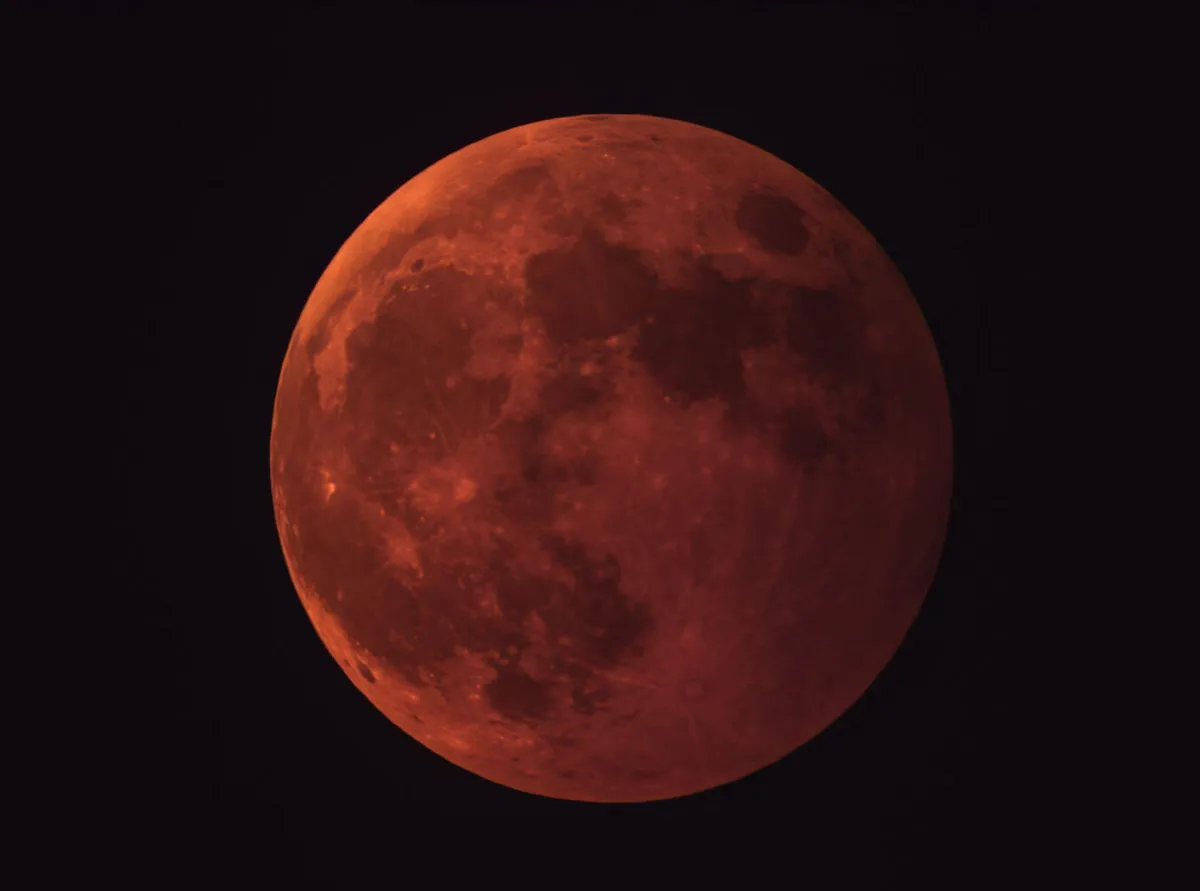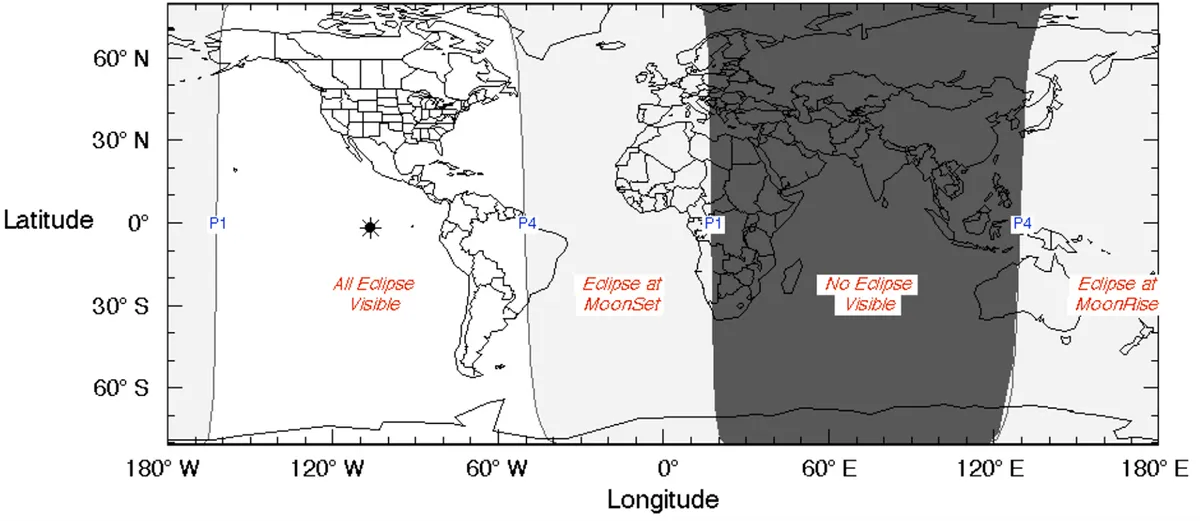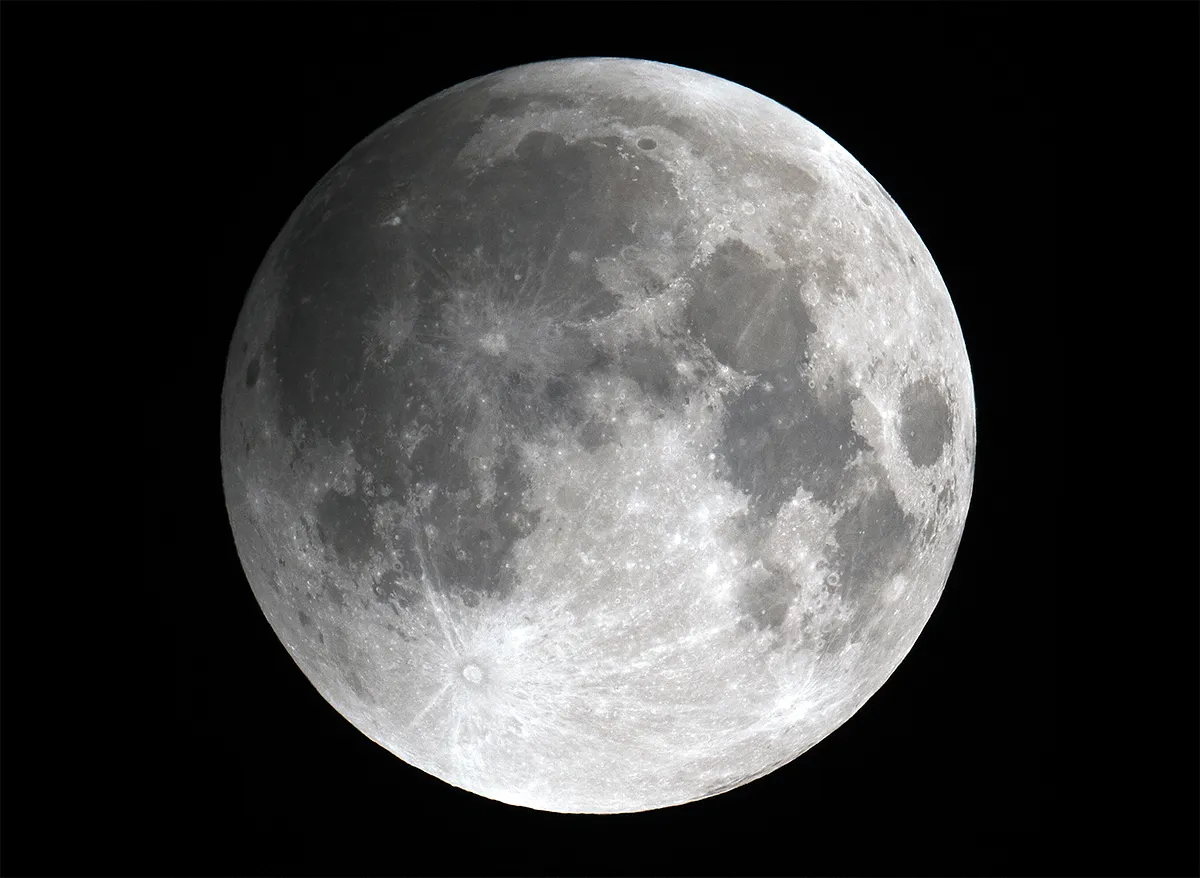A penumbral lunar eclipse will be visible on March 25 2024 across much of North and South America, and visible in the UK, Ireland and Western Europe as the Moon is setting.
The penumbral lunar eclipse will begin at 04:53 UTC (00:53 EDT) and end at 09:32 UTC (05:32 EDT), with greatest eclipse occurring at 07:13 UTC (03:13 EDT).
The March 25 lunar eclipse will not be visible in India or most of Asia, nor will it be visible in the eastern half of Africa.
Given this lunar eclipse is visible across the USA, there's a temptation to view it as a warm-up event to the April 8 total solar eclipse, but in reality it won't be as spectacular.
In this guide we'll cover what a penumbral lunar eclipse is, and what you'll see.
Download NASA and Fred Espenak's guide to the March 25 penumbral eclipse (PDF)
Penumbral lunar eclipses explained

Many of us will have seen the effects of a penumbral shadow before, it appearing as a lighter shadow beside a much darker umbral shadow.
This occurs when a shadow is cast by any object from an extended light source.
In the case of a lunar eclipse, the light source is the Sun and the shadow is Earth's, cast onto the Moon.
This produces a dark umbra and a more subtle penumbra, visible on the surface of the Moon.
Dark, total lunar eclipses occur when the Moon passes through Earth's umbral shadow, but penumbral lunar eclipses occur when the Moon passes through - you guessed it - Earth's penumbral shadow.

The darkening of the Moon during a penumbral lunar eclipse can be quite subtle and difficult to spot, as some of the Moon is still being illuminated by sunlight.
This is in contrast to the spectacular effect of a total lunar eclipse, when the Moon's surface appears orange, caused by sunlight being refracted through Earth's atmosphere.
However, the good news regarding the March 25 penumbral lunar eclipse is that almost all of the Moon will be in Earth's penumbra, meaning there will be more of an effect than other penumbral eclipses when the Moon merely 'clips' the penumbra.

This is very much a compare-and-contrast event, so it helps to get your timings right in order that you can observe the Moon before, during and after greatest eclipse.
Another good tactic is to photograph the event, as this will give you 'before and after' images that you can use to see how much the Moon's appearance changed.

Also, DSLR cameras will pick up the subtleties much better than your own eyes.
During the penumbral lunar eclipse, the Moon will be located in the constellation Virgo, in fact just below the Bowl of Virgo asterism.
If you're located in the UK and Ireland or anywhere else in western Europe, you won't realistically be able to notice the effects of the March 25 penumbral eclipse, as the Moon will have sunk below the horizon at the time of greatest eclipse.
But if you are based in Canada, the USA or Mexico, have a go at observing this lunar eclipse, or even photographing it, remembering that it pales in comparison to what you'll be able to see come April 8!
How to photograph the March 25 penumbral lunar eclipse

You may get best results by photographing the March 25 penumbral lunar eclipse with a DSLR camera.
A low ISO is recommended because the Moon is such a bright object. Find out more about this in our guide on how to photograph the Moon.
A good technique is to capture an image before the eclipse, one at greatest eclipse and one after, then compare.
A lens on a tripod is fine, but if you have a tracking mount, you'll be able to keep the Moon in frame and the whole project will be a lot easier.

You should be able to photograph the eclipse with most camera-lens combinations as long as you can see the Moon as a disc with recognisable features.
You could even try capturing the March 25 penumbral lunar eclipse with a smartphone attached to a telescope.
Use the 'pro' mode if your camera has it, as you'll be able to adjust white balance, exposure time and ISO to get the right shot.
Practise photographing the Moon between now and then to make the project run more smoothly on the day!
Find out more about this in our guide on how to photograph the Moon with a smartphone.
Did you observe or photograph the March 25 penumbral lunar eclipse? Let us know how you got on by emailing contactus@skyatnightmagazine.com
